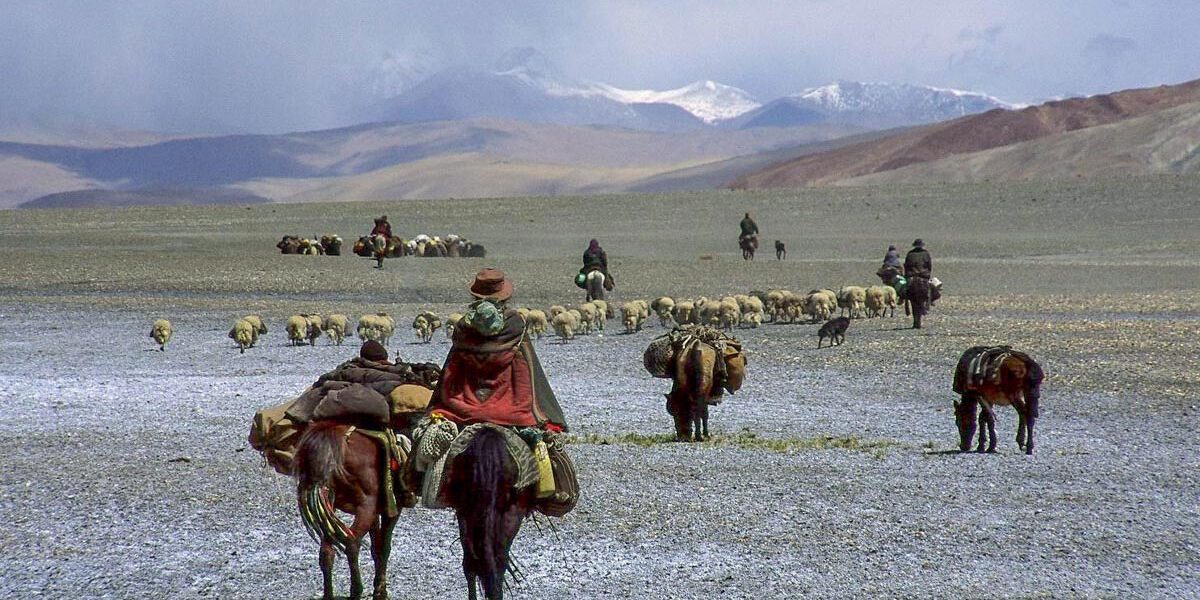Trekking with nomads in Ladakh offers more than just a high-altitude adventure; it opens a window into the rich cultural heritage of the nomads who have called this rugged landscape home for centuries. Join us as we explore how trekking with nomads in Ladakh allows travelers to immerse themselves in the unique culture and traditions of this stunning Himalayan region.
Introduction to Trekking in Ladakh with Nomads
Ladakh, known for its towering Himalayan peaks and ancient Buddhist monasteries, is a trekker’s paradise. But beyond the breathtaking landscapes lies a lesser-known aspect of Ladakh—its nomadic culture. Trekking in Ladakh is not just an outdoor adventure; it’s a journey into the heart of a community that has thrived for centuries in one of the most remote and harsh environments on earth.
Trekking with Ladakh’s nomads, particularly the Changthang nomads, offers a deep cultural immersion. As you traverse high-altitude trails, you’ll share the lifestyle of nomadic herders, sleep in traditional yak-hair tents, and experience their unique traditions. This makes trekking in Ladakh a one-of-a-kind cultural adventure, combining physical endurance with a rich, meaningful interaction with local communities.
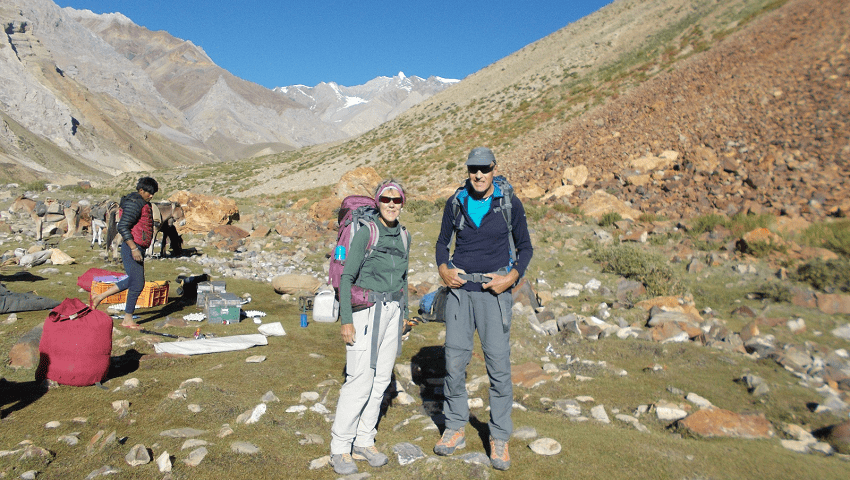
The Unique Culture of Ladakh’s Nomads
Who Are the Changthang Nomads?
The Changthang nomads inhabit the vast plateau known as the Changthang in eastern Ladakh. Living at altitudes above 14,000 feet, they primarily survive by raising yaks, pashmina goats, and sheep. These nomads have a deep connection with the land and nature, relying on the seasons to guide their movements.
For centuries, these nomads have practiced seasonal migration, moving between winter and summer pastures. Their life revolves around their livestock, which provides milk, wool, and meat. Despite the modern influences slowly seeping into Ladakh, the Changthang nomads have maintained much of their traditional way of life, making it a rare cultural experience for travelers.
Cultural Practices and Traditions of Nomadic Tribes
Nomadic life in Ladakh is deeply intertwined with Buddhism. The nomads regularly visit nearby monasteries for spiritual rituals, and you may find yourself participating in prayer ceremonies or visiting holy sites during your trek. Additionally, they celebrate unique festivals such as Losar (the Ladakhi New Year) and Hemis, where colorful dances and rituals take place.
Trekking with nomads also offers a chance to witness their daily routines. Whether it’s herding yaks, milking goats, or preparing meals, you’ll get hands-on experience in the daily lives of these resilient people. Meals often feature tsampa (roasted barley flour), butter tea, and the famous yak cheese, offering a unique gastronomic adventure alongside the trekking experience.
Popular Trekking Routes in Ladakh
Markha Valley Trek: A Blend of Adventure and Culture
The Markha Valley trek is one of Ladakh’s most famous treks, offering stunning views of snow-capped peaks, ancient monasteries, and traditional villages. This trek combines both adventure and culture, as trekkers traverse river crossings, navigate high-altitude passes, and stay in remote homestays with Ladakhi families. Along the way, you’ll encounter nomadic herders and learn about their close relationship with nature.
This trek typically lasts between 6 to 8 days and takes you through Hemis National Park, where lucky trekkers may spot the elusive snow leopard. The Markha Valley trek is ideal for those looking to combine high-altitude trekking with a deep cultural experience.
Nubra Valley Trek: Exploring Remote Nomadic Life
For those seeking a more remote trekking experience, the Nubra Valley trek offers the chance to explore one of Ladakh’s least-visited regions. Known for its sand dunes, Bactrian camels, and proximity to the Siachen Glacier, Nubra Valley provides a stunning backdrop for cultural immersion.
During this trek, you’ll pass through remote villages like Diskit and Hunder, meet nomadic tribes, and witness their unique way of life. The trek offers an exceptional opportunity to experience the nomadic lifestyle in one of Ladakh’s most rugged landscapes.
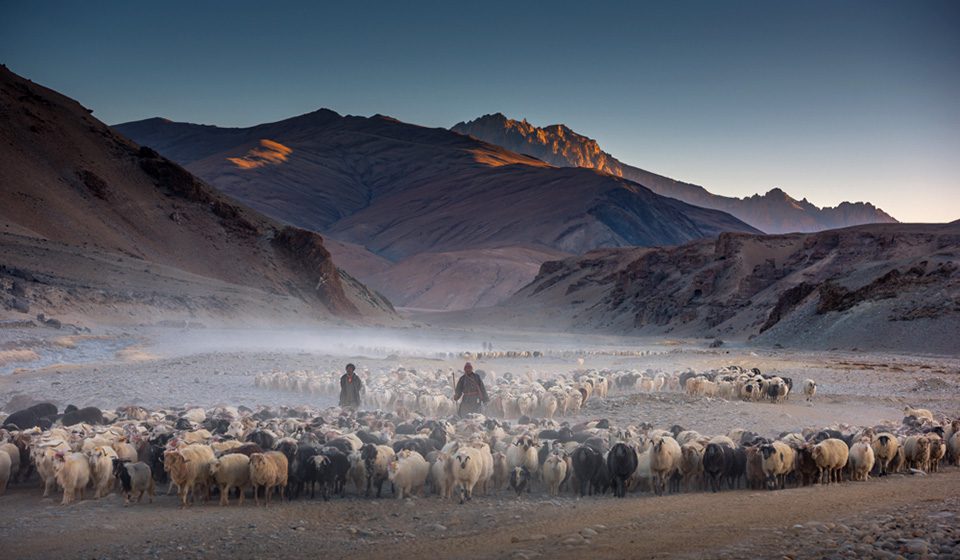
What to Expect While Trekking with Nomads
Immersing Yourself in Nomadic Culture
Trekking with Ladakh’s nomads isn’t just about walking; it’s about living their life. From the moment you set out on the trail, you become part of their world. Whether it’s helping to herd yaks across high-altitude meadows or cooking a meal around a fire in a traditional yak-hair tent, the experience is one of full immersion.
As a guest of the Changthang nomads, you’ll witness firsthand the delicate balance they maintain between survival and sustainability. The nomads’ deep respect for nature is evident in their daily practices, from the way they care for their livestock to their sustainable use of resources.
Challenges of Trekking in High-Altitude Ladakh
Trekking in Ladakh is challenging, primarily due to the altitude. Most treks in the region occur at elevations between 12,000 to 18,000 feet, where altitude sickness can be a real concern. Before starting your trek, it’s essential to spend a few days in Leh to acclimatize to the altitude.
Additionally, the weather can be unpredictable, with temperatures plummeting at night, even during summer. It’s important to come prepared with the right trekking gear, including warm clothing, sturdy boots, and sun protection.
Best Time to Trek in Ladakh with Nomads
The best time to trek with nomads in Ladakh is between June and September. During these months, the high passes are generally free of snow, and the weather is more predictable. However, even during these months, temperatures can vary drastically between day and night, especially at higher altitudes.
If you’re interested in nomadic festivals like Losar or Hemis, planning your trek around these events can offer an even more immersive cultural experience.
Preparing for a Trek with Ladakh’s Nomads
Physical and Mental Preparation for High-Altitude Trekking
Trekking at high altitudes requires both physical and mental preparation. Cardiovascular fitness is key to handling the thin air at elevations of 12,000 feet and above. Acclimatization is crucial, so it’s recommended to spend a few days in Leh to allow your body to adjust.
Mentally, trekking in Ladakh can be demanding. The remote landscapes, combined with the lack of modern amenities, require a mindset focused on endurance, patience, and adaptability.
Understanding Local Customs and Etiquette
Respecting the local customs and traditions is an essential part of trekking with nomads. The Changthang nomads are hospitable but deeply spiritual, so understanding and observing their cultural norms is crucial. For instance, when entering a nomad’s tent, it’s customary to remove your shoes and sit where you are invited.
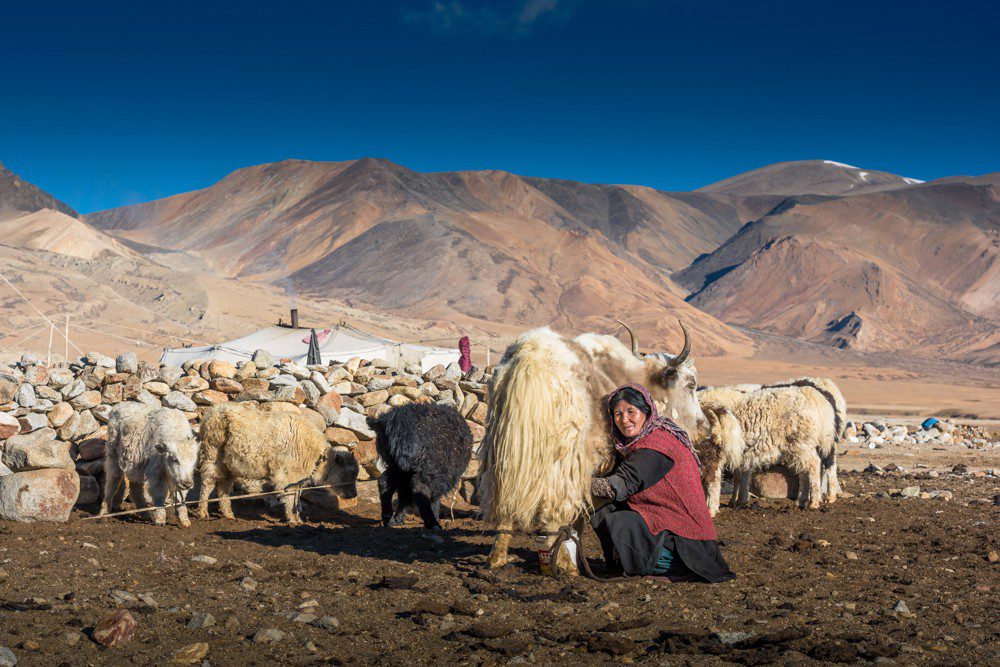
Essential Gear for High-Altitude Treks
Packing List for Trekking with Nomads
Here’s a list of essential items you should pack for a high-altitude trek in Ladakh:
| Item | Purpose |
|---|---|
| Sturdy trekking boots | For navigating rocky and uneven terrain |
| Warm layers | For cold nights, especially at high altitudes |
| Sleeping bag (rated for -10°C) | Essential for staying warm during overnight camps |
| Sunblock and sunglasses | Protection against the harsh sun at high altitudes |
| Reusable water bottle | To stay hydrated while reducing plastic waste |
Staying with Nomadic Families: A Unique Experience
One of the highlights of trekking with nomads is staying in their homes or traditional yak-hair tents. These stays offer an intimate glimpse into their way of life. You’ll sleep on the floor, eat traditional meals, and share stories around the fire. The hospitality of Ladakh’s nomads is legendary, and you’ll leave with memories of not just the landscapes but the people who welcomed you into their homes.
Ladakh’s Remote Villages: Cultural and Spiritual Highlights
Visiting Ladakh’s Monasteries and Temples
During your trek, you’ll likely pass by ancient Buddhist monasteries such as Hemis, Thiksey, or Diskit. These spiritual centers are integral to life in Ladakh, offering both religious and cultural insights. Many treks incorporate visits to these monasteries, where you can witness prayer ceremonies and explore the rich history of Tibetan Buddhism.
Exploring Remote Villages and Hidden Valleys
Ladakh is home to some of the most remote villages in India. Trekking with nomads offers the unique opportunity to visit these hidden gems, where time seems to stand still. Villages like Rumbak, Lingshed, and Sumda Chenmo are some of the few places where you can experience Ladakh’s ancient traditions untouched by modernity.
Sustainable Trekking Practices in Ladakh
Eco-Friendly Trekking with Nomads
Ladakh is a fragile ecosystem, and it’s important to practice sustainable tourism to preserve its beauty. As a trekker, make sure to:
- Leave no trace: Carry out all waste, including non-biodegradable items.
- Respect wildlife: Observe animals from a distance without disturbing them.
- Support local communities: Use local guides, homestays, and purchase local goods to support the nomadic economy.
Supporting Nomadic Communities Through Tourism
Trekking with nomads also offers a way to give back to the community. By staying in nomadic homestays and buying local products, such as pashmina wool, you are directly supporting these communities. Sustainable tourism is essential for preserving Ladakh’s unique culture and landscape for future generations.
Conclusion: Embrace the Adventure of Trekking with Nomads
Trekking with Ladakh’s nomads is more than just an adventure; it’s an immersive cultural experience that connects you to one of the world’s most resilient and fascinating communities. As you trek through Ladakh’s breathtaking landscapes, you’ll learn the values of sustainability, resilience, and the importance of tradition in a rapidly changing world. If you’re looking for a trek that goes beyond the ordinary, trekking with nomads in Ladakh offers a profound and transformative journey.
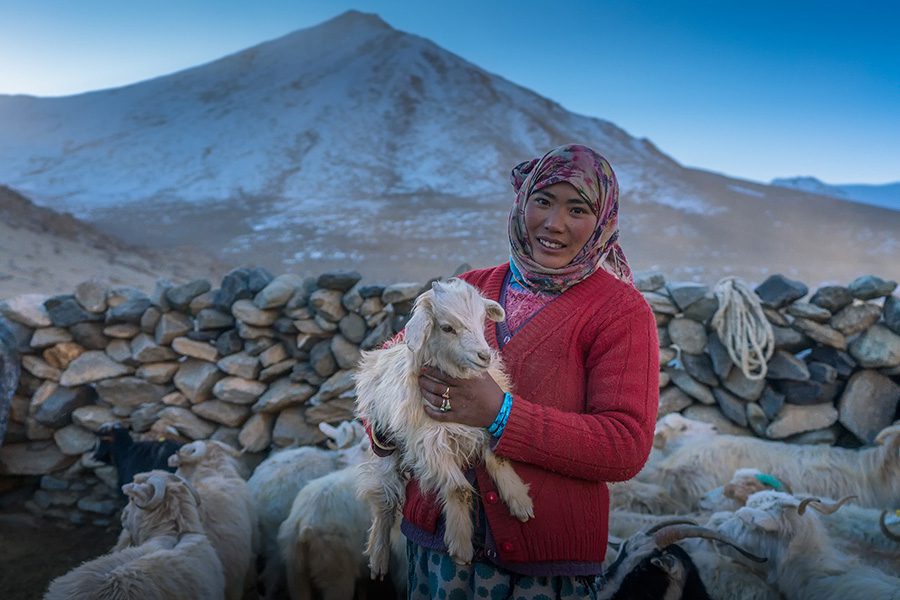
FAQs
- What is the best time to trek in Ladakh with nomads?
The best time to trek with nomads is between June and September, when the weather is stable, and the high passes are free of snow. - How can I prepare for high-altitude trekking in Ladakh?
Spend a few days acclimatizing in Leh, stay hydrated, and avoid alcohol. Cardiovascular fitness is key for high-altitude treks. - What should I pack for trekking in Ladakh?
You’ll need warm clothing, sturdy boots, a sleeping bag rated for -10°C, sunblock, and a reusable water bottle. - Do I need a guide for trekking with nomads in Ladakh?
Yes, a local guide is essential for navigating the trails and understanding the local customs and culture. - What are the cultural etiquette rules when staying with nomads?
Always remove your shoes before entering a tent, sit where invited, and observe local customs, especially during meal times and ceremonies. - Is it safe to trek in Ladakh for beginners?
While Ladakh is safe, high-altitude trekking can be challenging for beginners. Ensure you are physically fit and travel with a guide.

